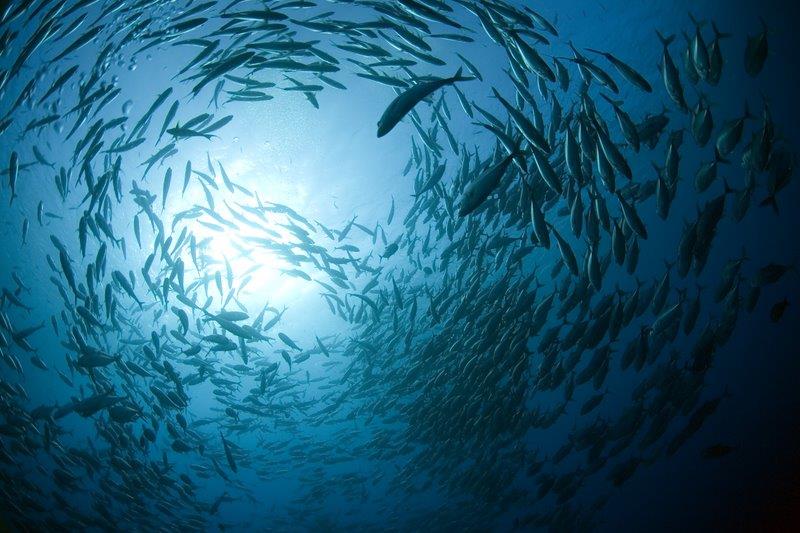Linking below to a great news story by Dan Upham of EDF that reinforces the value of market-based approaches to conserving natural resources, particularly those such as the planet’s fisheries at increased risk of over-harvesting due to the tragedy of the commons. It’s all about getting the incentives and science right, and encouraging smarter and responsible consumerism.
The amazing comeback of U.S. fisheries, and what it means for sustainable seafood
Dan Upham / Published November 20, 2015 in OceansPartnerships

We only celebrate World Fisheries Day once a year, but for the billions of people who rely on the sea for nutrition and millions who fish its waters for income, every day is fisheries day.
So this is a good time to pause and reflect on just how far America’s commercial fisheries have come in the last decade.
Smarter management policies, more fishermen leading conservation efforts, and heightened consumer awareness add up to a fisheries landscape that’s healthier than at any point in recent history.
Not only does this benefit our 30,000-some fishermen and the communities where they live, but it’s also good news for those of us who like seafood.
Traditional fishing goes sustainable
Just a decade ago, many commercial fisheries were something of a free for all, with little incentive to do anything but fish first, fish fast, and fish until there was nothing left.
Risky for fishermen and detrimental to species abundance, this system too often corroded the health of fishing communities and fish populations alike. Since then, an alternative management approach called catch shares has transformed this dynamic in many domestic fisheries by aligning the economic interests of fishermen with long-term conservation outcomes.
There’s a boatload of evidence (pun very much intended) that this approach is working.
Red snapper: Quite a comeback
As recently as 2007, the red snapper fishery in the Gulf of Mexico was on the brink of collapse. “In the 1980s, 1990s and early 2000s the fishery was ruled by derby seasons where fishermen raced to catch as much fish as possible a few days every month,” my colleague Tim Fitzgerald noted in a National Geographic article.
Thanks to significant advances in sustainable fishing practices that helped fishermen adapt, red snapper populations in the Gulf of Mexico today are three times the size compared to 2007. More fish in the water means more revenue for fishermen today, and tomorrow.
West Coast ground fisheries: Restored
Groundfish such as sablefish and petrale sole, found along the U.S. West Coast, have long been popular dishes. But the traditional style of fisheries management left the fate of groundfish uncertain, particularly for long-lived slow-growing rockfish species.
We worked with fishermen and policymakers to integrate rights-based management and the results are extraordinary: Bycatch is down 75 percent and overfished species are recovering faster than expected.
Thanks to these and other improvements, the Marine Stewardship Council in 2014 certified 13 species to their standards for sustainable fishing, calling the fishery “the most diverse, complex fishery ever” to be assessed against the standard.
Retailers bring sustainable fish to the masses
Fishermen catching fish are only one side of the equation; the public needs access to sustainable fish for the gains to be truly durable. Once again, a lot has changed over the last decade.
Regional grocer H-E-B had an existing sustainability policy covering all fresh, frozen and prepared seafood items they sold, but we enhanced these efforts by working with the retailer’s suppliers to further improve sustainability and increase access to appropriately farmed fish.
And Walmart, the world’s largest retailer, now says that more than 90 percent of Walmart U.S., Sam’s Club and Asda’s (United Kingdom) seafood has earned Marine Stewardship Certification or Best Aquaculture Practices, or is engaged in a Fishery Improvement Project.”
We vote with our wallets as much as on election days, and savvy food suppliers are answering the consumer call for more environmentally responsible options when it comes to seafood.
Our Seafood Selector makes choosing fish easy
Currently more than two-thirds of the fish caught in U.S. federal waters are managed sustainably under catch shares. If we keep fishing and eating right, that number can and should go even higher.
Even better, success in U.S. waters can be scaled up to help build a sustainable global food supply. And that’s no clickbait.

